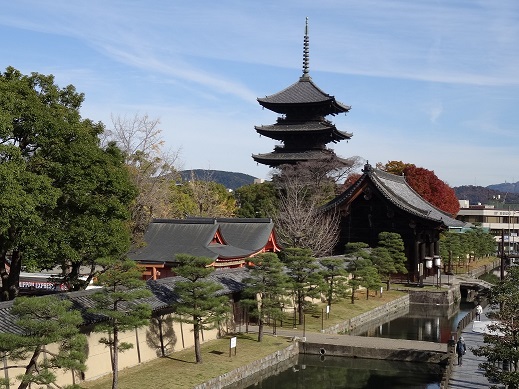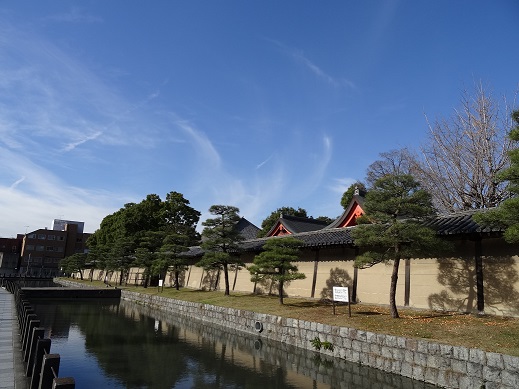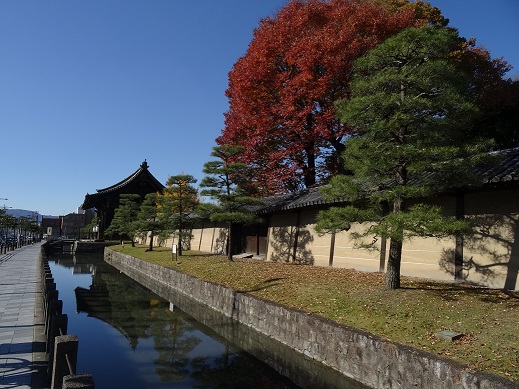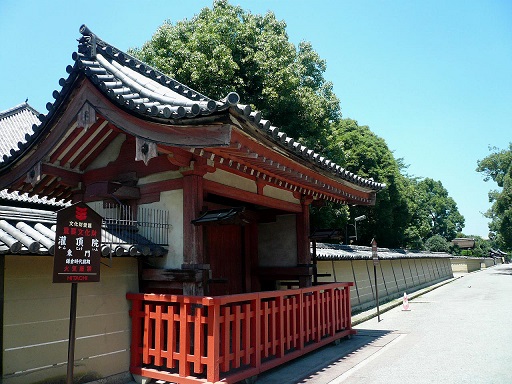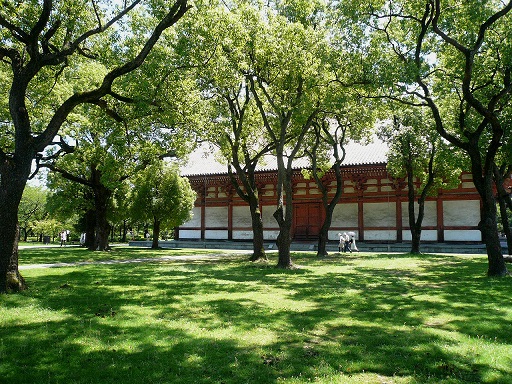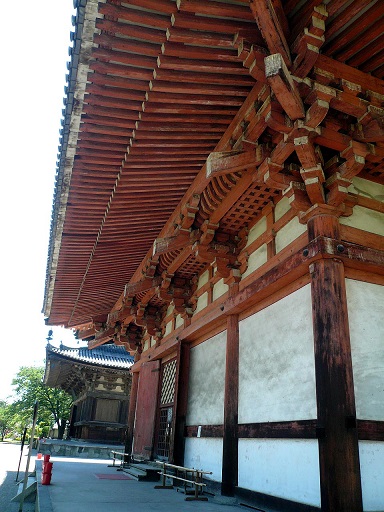|
Toji Temple (Kyoou Gokokuji Temple)
|
Toji Temple is very well-known as the Five-Storied Pagoda, located to the south of Kyoto Station.
The Pagoda is the biggest Pagoda in Japan and you can see it from a Shinkansen train.
The other name of Toji Temple is "Kyoou Gokokuji Temple". It was originally built in 796 to guard the eastern area of Japan, when the imperial palace was moved from Nara to Kyoto. The name of "Toji" means the east temple.
When you approach Toji Temple from Toji Station on Kujyo Street, you will see the Five-Storied Pagoda and will be overwhelmed by the pagoda.
The Five-Storied Pagoda of Toji Temple

To the south of the Toji Temple, a moat and a roofed mud wall protect Toji Temple.
This view also makes you understand that Toji Temple is a huge temple manufactured by the government.
|
|
In the middle of the south side, the main gate is located.
The gate was originally the gate of Sanjyusangen-do Temple Temple and was moved to Toji Temple in 1895.
This gate was built in 1601 and is designated as an important property of Japan.
The Main Gate of Toji Temple
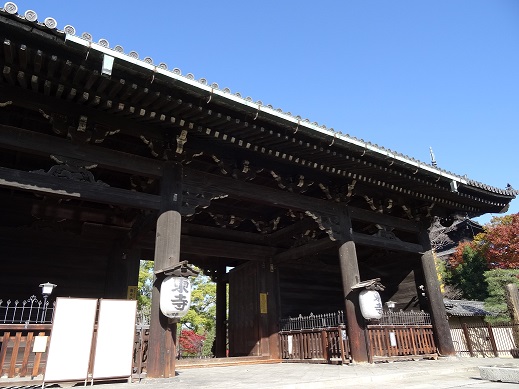
When you pass through the main gate, you will be just in front of the "Kondo" Hall.
"Kondo" Hall is also very impressive and you will be overwhelmed.
"Kondo" Hall is the main hall of Toji Temple.
"Kondo" Hall, the Main Hall

The original "Kondo" Hall was destroyed in 1486 by a war fire, and it was rebuilt in 1603.
"Kondo" Hall is designated as a national property of Japan.
On the left side of "Kondo" Hall, there are a couple of branch temples. They are surrounded by a roofed mud wall.
|
|
To the north of branch temples, "Mieido" House is located.
"Mieido" is the house where KUKAI (also known as Kobo Daishi)
(774 - 835)
lived.
KUKAI is one of the greatest and most important priests in Japan.
He was the founder of Japan's "Shingon" Esoteric Buddhism.
"Mieido" House

He studied "Shingon" Sect in China for two years from 804 to 806.
Emperor SAGA
(786 - 842)
granted To-ji Temple to KUKAI and Toji Temple flourished as the central training center of "Shingon" Esoteric Buddhism.
"Mieido" was rebuilt in 1390 and is designated as a national treasure of Japan.
To the east of "Mieido" House, the entrance to the Five-Storied Pagoda, "Kodo" Hall and "Kondo" Hall are located.
"Kodo" Hall is the core architectural structure in esoteric Buddhism.
"Kodo" Hall was rebuilt in 1491 and is designated as an important property of Japan.
|
|
Inside of "Kodo" Hall, the statue of "Dainichi-Nyorai" is located and another five "Nyorai" statues are surrounding "Dainichi-Nyorai" statue.
Five major "Bosatsu" statues and five major "Myoou" statues are located on both the east and west side of "Nyorai" statues.
Also, other Buddha statues are located inside of "Kodo" Hall. These statues were made in the
Heian Age
(794 - 1185)
.
I was really impressed with this scenery.
To the south of "Kodo" Hall, "Kondo" Hall is located just in front of the main gate.
"Yakushi-Nyorai" statue is the principal image of "Kondo" Hall.
"Kondo" Hall
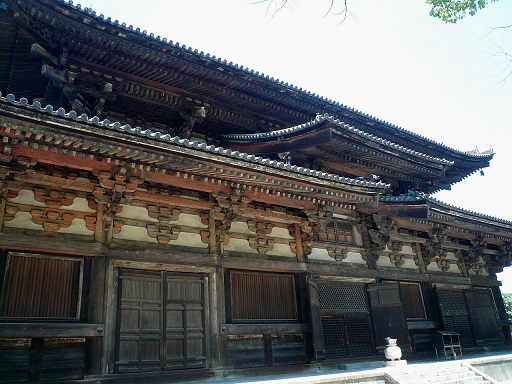
Architectural designs of roof support of "Kodo" and "Kondo" Halls indicate that both halls are the most formal architecture.
|
To the east of "Kondo" Hall, Five-Storied Pagoda is located.
The pagoda is the tallest wooden building in Japan. It was rebuilt in 1644 and is designated as a national treasure of Japan.
Five-Storied Pagoda
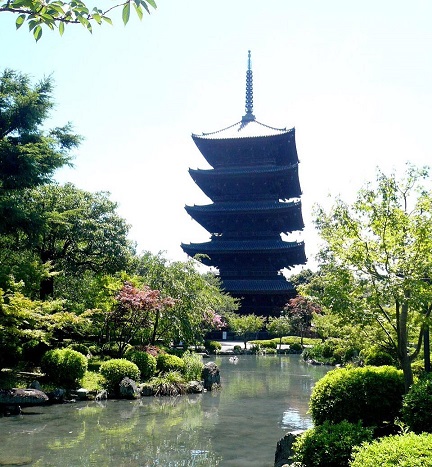
In Toji Temple, there are many temple buildings designated as national treasures and important properties of Japan.
Also, Buddha statues located in "Kodo" and "Kondo" Halls are gorgeous and spiritual.
You will be very fascinated not only to the Five-Storied Pagoda, but also to esoteric Buddhism and Buddha Statues.
|
